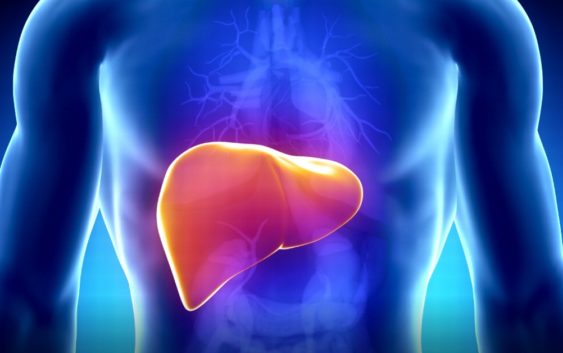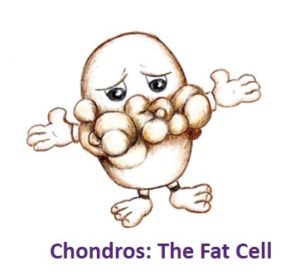The Liver

The Liver is the largest and heaviest organ in the body and can be found at the top right hand side in the abdominal cavity, directly underneath the diaphragm. It is the only human organ capable of natural regeneration of lost tissue – as little as 25% of a liver can regenerate into a whole liver – Just one good reason to take care of your liver!
The liver’s functions include digesting fats, metabolising proteins, making and storing glucose, and serving as the body’s detox centre. As a result of its various functions, it is also the body’s radiator, producing more heat than any other organ.
It is an accessory digestive gland and produces bile, an alkaline compound that aids digestion via the emulsification of lipids (fats), vitamin A (found in green-leafy vegetables and carrots), vitamin D, and plasma proteins, to name a few.
It stores vitamins A, B12, D, E and K.
The liver plays a major role in metabolism within the body and includes the regulation of glycogen storage. Glycogen converts to glucose when energy is needed.
One symptom of liver damage is chronic fatigue that occurs from a generalized loss of nutrients, minerals and vitamins, which is why it is important to eat a healthy balanced diet.
Enjoying a glass of wine or something similar is something most of us do at some point. But drinking excessive alcohol most days of the week may, over time, cause liver disease.
On average, it takes one hour for a healthy liver to process one unit of alcohol. A large glass of wine can take six hours for your liver to process completely.
That means it’ll take you two hours per pint of normal-strength beer or four hours to process a pint of strong beer.
The liver is connected to two large blood vessels, one of which is the portal vein. The portal vein carries blood rich in digested nutrients from the entire gastrointestinal tract and also from the spleen and pancreas.
The liver plays an important role in carbohydrate, protein, amino acid and lipid (fats) metabolism. The liver converts carbohydrates into glycogen from glucose. During digestion, the liver produces bile (a yellowish liquid) required for emulsifying fats and helping the absorption of vitamin K from the diet. Some of the bile drains directly into the duodenum and some is stored in the gallbladder.
The liver is an insulin-guided organ so its behaviour changes depending on the level of the hormone insulin in the body.
After eating, blood glucose levels rise, which in people without diabetes triggers the pancreas to release insulin into the blood. Insulin is the signal for the body to absorb glucose from the blood. Most cells just use the glucose to supply them with energy.
But the liver has a special job when it comes to glucose. When levels of glucose (and consequently insulin) are high in the blood, the liver responds to the insulin by absorbing glucose. It packages the sugar into bundles called glycogen. These glucose granules fill up liver cells, so the liver is like a warehouse for excess glucose.
When glucose levels drop, insulin production falls, too. The shortage of insulin in the blood is the signal that the liver needs to liquidate its assets, sending its glucose stores back into the blood to keep the body well fed between meals and overnight.
The liver sends out stored glucose and has the singular ability to make glucose from scratch. This is a critical function that keeps people alive when food is scarce. In people with diabetes, however, the liver doesn’t process and produce glucose normally, adding to the challenge of blood glucose control.
The liver can’t directly detect blood glucose levels; it knows only what insulin tells it. So, if there is a shortage of insulin or if the liver doesn’t notice the insulin that’s there, the liver assumes that the body needs more glucose, even if blood glucose levels are already elevated. That is why people with diabetes can have sky-high blood glucose even if they haven’t eaten—for example, first thing in the morning.
Processing the body’s fat is a key job for the liver. Once the liver is full of glycogen, it starts turning the glucose it absorbs from the blood into fatty acids, for long-term storage as body fat.
The fatty acids and cholesterol are gathered as fatty packages and delivered around the body via the blood. Much of the fat ends up stored in fat tissues.
All of this extra fat produced and stored by the liver can sometimes lead the liver itself to get fat. In a condition known as non-alcoholic fatty liver disease. The liver cells accumulate excess fat instead of sending it off to fat cells.
This disease is common, affecting 20 percent of adults overall, and the majority of people with obesity or diabetes, or both.
It’s not just too much sugar that may cause liver fatigue. If you have excessive alcohol most days of the week this may, over time, also cause your liver to struggle to perform its functions effectively.
Here are two reasons why too much alcohol can damage your liver:
- Oxidative stress – when the liver tries to break down alcohol, the resulting chemical can damage its cells. This damage can lead to inflammation and scarring as the liver tries to repair itself.
- Toxifies the gut bacteria – Alcohol can damage our intestine, which lets toxins from our gut bacteria get into the liver.
Drinking excessive alcohol may make your liver fat. If you drink more than eight units a day for two to three weeks, you are likely to develop something called “fatty liver”.
Your liver converts the sugar (glucose) in alcohol into fat, which it subsequently sends around your body to store for use when you need it. Imagine all those fat cells trying to squeeze into your liver!!!

When your liver gets full of fat you may feel a vague discomfort in your abdomen because your liver is swollen. You may also feel sick and lose your appetite. The good news is that if you stop drinking, the liver will start shedding the fat cells. However, if you continue to drink, a fatty liver is the first stage of liver disease.
